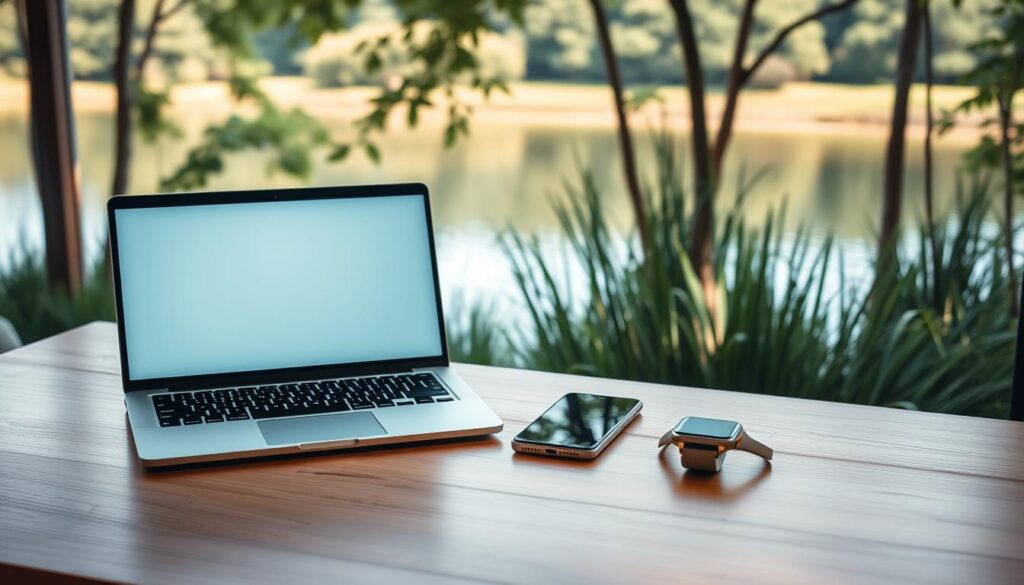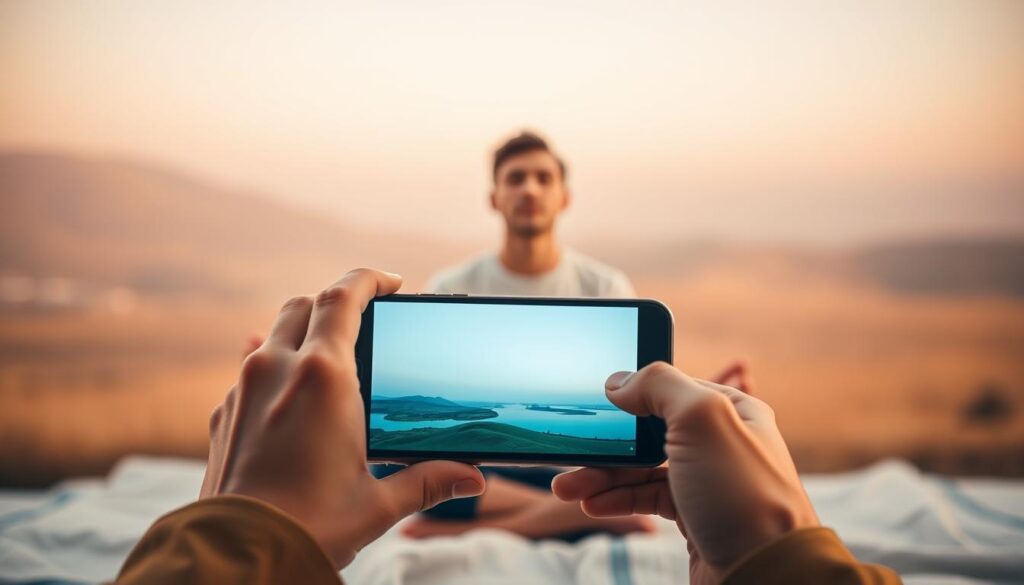Blog
How to Do a Digital Detox (Without Quitting Social Media Entirely)

In today’s technology-driven world, finding a balance between staying connected and maintaining mental well-being can be challenging. Excessive technology use has been linked to negative effects such as heightened attention-deficit symptoms and disrupted sleep.
A digital detox offers a solution by allowing individuals to recharge and reduce their screen time. By temporarily disconnecting from social media and other digital platforms, individuals can alleviate the pressures of constant connectivity and improve their mental health.
Experts suggest that a digital detox can be beneficial without requiring individuals to quit social media entirely, making it a practical and achievable goal for those looking to improve their mental well-being.
Key Takeaways
- Understand the concept of a digital detox and its benefits.
- Learn how to reduce screen time effectively.
- Discover the negative effects of excessive technology use.
- Find out how a digital detox can improve mental health.
- Explore practical tips for implementing a digital detox.
Understanding Digital Overload in Modern Life
In today’s digitally driven world, the line between being connected and being overwhelmed is increasingly blurred. The constant influx of information through various digital channels can lead to a state of digital overload, negatively impacting mental health and overall well-being.
Signs You Need a Digital Break
Recognizing the signs of digital overload is crucial to taking the first step towards a healthier digital lifestyle. Some common indicators include feeling anxious when unable to check notifications, spending excessive time on social media, and experiencing fatigue or headaches after prolonged screen time.
- Feeling anxious or uneasy when unable to check notifications
- Spending more than 4 hours a day on social media
- Experiencing physical or mental fatigue due to screen time
The Psychological Impact of Constant Connectivity
Constant connectivity can have profound psychological effects, including increased stress levels, decreased attention span, and a heightened sense of anxiety. The pressure to be constantly available and responsive can lead to feelings of burnout.
| Psychological Effects | Symptoms |
|---|---|
| Increased Stress | Anxiety, Restlessness |
| Decreased Attention Span | Difficulty Focusing, Forgetfulness |
| Burnout | Emotional Exhaustion, Reduced Productivity |
Why Complete Disconnection Isn’t Always Practical
While a complete digital detox might seem like an attractive solution, it’s not always practical or feasible for everyone, especially those whose work or personal lives rely heavily on digital connectivity. Instead, finding a balance between being connected and maintaining mental health is key.
By understanding the signs of digital overload and its psychological impact, individuals can take steps towards achieving a healthier balance between their digital and analog lives.
Assessing Your Current Digital Consumption
Before you can make changes, you need to have a clear picture of your current digital consumption patterns. Assessing your digital habits is essential to understanding how you interact with digital devices and identifying areas for improvement.
Tracking Your Screen Time Accurately
To start, it’s crucial to track your screen time accurately. This involves using built-in features on your devices or downloading apps that monitor how much time you spend on different applications and websites. By doing so, you’ll gain insights into your digital habits and be able to pinpoint where you can make adjustments.
Tips for tracking screen time:
- Use built-in screen time tracking features on your devices.
- Download third-party apps for more detailed insights.
- Set up weekly reports to monitor your progress.
Identifying Digital Habits That Drain Your Energy
Not all screen time is created equal. Some digital habits can leave you feeling drained, while others can be energizing. It’s essential to identify which digital activities drain your energy and which ones you can cut back on.
Recognizing Your Personal Digital Triggers
Understanding what triggers your digital usage is vital. This could be anything from social media notifications to work emails. By recognizing these triggers, you can develop strategies to manage them effectively.
Social Media Triggers
Social media can be a significant trigger for excessive screen time. Notifications, endless scrolling, and the fear of missing out (FOMO) can all contribute to increased digital consumption.
Work-Related Digital Stress
Work-related digital stress is another common trigger. Constantly checking work emails and messages can blur the line between work and personal life, leading to digital burnout.
| Digital Trigger | Impact | Management Strategy |
|---|---|---|
| Social Media Notifications | Increased screen time, distraction | Turn off notifications, use app limitations |
| Work Emails | Blurred boundaries, stress | Set work hours, use email filters |
Setting Realistic Goals for Your Digital Detox
Setting realistic goals is the foundation of an effective digital detox strategy. To achieve a balanced digital life, it’s crucial to define what you want to accomplish and how you plan to do it. This involves understanding your current digital habits and identifying areas for improvement.
Defining What Success Looks Like for You
Success in a digital detox is personal and varies from one individual to another. For some, it might mean reducing screen time by a certain percentage, while for others, it could involve abstaining from specific apps or platforms for a set period. Defining clear, achievable goals helps in maintaining motivation throughout the detox process.

Creating Measurable Objectives
Once you’ve defined what success looks like, the next step is to create measurable objectives. This could involve tracking your screen time, setting limits on specific apps, or scheduling device-free times. By making your goals measurable, you can track your progress and stay committed to your digital detox plan.
Balancing Connectivity and Disconnection
A key aspect of a successful digital detox is finding a balance between connectivity and disconnection. While the goal is to reduce digital overload, completely disconnecting might not be practical or desirable for everyone. Striking a balance allows you to maintain necessary connections while still benefiting from the detox.
By setting realistic goals and understanding the balance between connectivity and disconnection, you can create a digital detox plan that is both effective and sustainable.
Creating Tech-Free Zones and Times
In today’s digitally driven world, creating spaces and times free from technology can significantly enhance mental clarity and focus. As our lives become increasingly intertwined with digital devices, establishing boundaries is crucial for maintaining a healthy balance.
Establishing Device-Free Spaces in Your Home
Designating certain areas of your home as tech-free can help reduce digital distractions and promote more meaningful interactions with family and friends. For instance, making the dinner table or bedrooms device-free zones can foster a more connected and restful environment. Creating a tech-free sanctuary in your home can be as simple as choosing a room or corner where devices are not allowed, encouraging relaxation and mindfulness.
Implementing Digital Curfews
Establishing a digital curfew involves setting a specific time after which digital devices are not used. This practice can help improve sleep quality and reduce the constant stream of notifications that can be a source of stress. Setting a digital curfew requires discipline but can lead to significant improvements in overall well-being.
The Power of Morning and Evening Rituals
Morning and evening rituals offer a powerful way to frame your day with positive habits, enhancing your focus and setting a constructive tone. These rituals can be particularly effective when they involve practices that are not digitally driven.
Morning Mindfulness vs. Morning Scrolling
Starting your day with mindfulness practices such as meditation or journaling can have a profoundly positive impact on your mental clarity and focus. In contrast, beginning the day by scrolling through social media can lead to a reactive rather than proactive approach to your day. Making a conscious choice between these two approaches can significantly affect your productivity and stress levels.
Evening Wind-Down Techniques
Engaging in calming activities in the evening, such as reading or practicing gentle stretches, can help signal to your body that it’s time to sleep. Avoiding screens and the blue light they emit can also improve sleep quality.
“A calm mind is the result of a deliberate practice of relaxation and mindfulness.”
Implementing these wind-down techniques can lead to better rest and recovery.
Essential Digital Detox Strategies That Preserve Mental Health
The constant influx of digital information can be overwhelming, making it essential to adopt digital detox strategies that support mental health. In today’s digital age, finding balance is crucial for our well-being.
App Limitations and Screen Time Controls
One effective way to manage digital consumption is by utilizing app limitations and screen time controls. Many devices and apps offer built-in features that allow users to set time limits, schedule downtime, and monitor app usage. By leveraging these tools, individuals can regain control over their digital habits.
- Set daily time limits for specific apps
- Schedule device-free times or “downtime”
- Monitor app usage to identify areas for reduction
Notification Management Techniques
Managing notifications is another critical aspect of digital detox. By customizing notification settings, individuals can minimize distractions and reduce stress. This involves:
- Disabling non-essential notifications
- Prioritizing important alerts
- Using “do not disturb” modes during focused periods
Digital Minimalism Approaches
Digital minimalism involves simplifying one’s digital presence and habits. This can be achieved through:
Decluttering Your Digital Space
Regularly cleaning up digital clutter, such as unsubscribing from unnecessary emails, deleting unused apps, and organizing digital files, can significantly reduce digital overwhelm.
Simplifying Your Online Presence
Simplifying online profiles and reducing the number of social media platforms can help minimize digital distractions and enhance mental clarity.
By implementing these digital detox strategies, individuals can create a healthier balance between their digital and analog lives, ultimately preserving their mental health. It’s about making conscious choices to manage digital consumption effectively.
Key Takeaways:
- Utilize app limitations and screen time controls
- Implement effective notification management
- Adopt digital minimalism approaches
Mindful Social Media Usage
Mindful social media usage is not just about limiting screen time; it’s about creating a more intentional online experience. As we navigate our digital lives, being mindful of how we interact with social media can significantly impact our mental health and overall well-being.
Quality Over Quantity: Curating Your Feed
Curating your social media feed is essential for a positive online experience. By carefully selecting the content you engage with, you can reduce digital noise and focus on what adds value to your life. Unfollowing or muting accounts that do not contribute positively to your feed is a practical first step.
Setting Time Boundaries for Social Platforms
Establishing clear time boundaries for social media usage helps prevent excessive screen time. Utilizing built-in screen time controls or third-party apps can assist in setting these limits, ensuring that social media does not encroach on other aspects of your life.
Active vs. Passive Consumption
The way we consume content on social media significantly affects our digital experience. Active consumption, such as engaging with posts or participating in discussions, can be more fulfilling than passive scrolling.
Engagement That Adds Value
Engaging with content that adds value to your life can enhance your social media experience. This includes participating in meaningful discussions, sharing relevant content, or connecting with like-minded individuals.
Breaking the Infinite Scroll Habit
The infinite scroll feature on many social platforms can lead to mindless browsing. To break this habit, consider setting a specific time limit for browsing or using features that remind you to take breaks.

By implementing these strategies, you can cultivate a healthier and more mindful approach to social media, enhancing your overall digital wellness.
Replacing Digital Habits with Analog Activities
As we navigate the complexities of modern life, replacing digital habits with analog activities becomes increasingly important. In the quest for a digital detox, it’s not just about reducing screen time but also about filling the void with meaningful, offline experiences.
Rediscovering Offline Hobbies
Engaging in offline hobbies can be a powerful way to disconnect from the digital world. Activities such as painting, reading, or playing a musical instrument not only provide a creative outlet but also help in reducing stress. For instance, adult coloring books have seen a resurgence in popularity as a calming, analog activity.
- Painting or drawing classes
- Reading clubs or literary events
- Playing a musical instrument or joining a local band
According to a study, engaging in creative activities can significantly improve mental health by providing a sense of accomplishment and relaxation.
Building In-Person Connections
While digital platforms make it easy to stay connected, they often lack the depth and intimacy of in-person interactions. Building and maintaining in-person connections through community events, social gatherings, or group sports can enhance our sense of belonging and support mental well-being.
“The technology you use impresses no one. What impresses people is the quality of your ideas, the way you present them, and the impact they have on others.” –
Nature-based activities offer another avenue for mental restoration. Spending time outdoors, whether it’s hiking, gardening, or simply walking in a park, can have a profound impact on our mental health.
Nature-Based Activities for Mental Restoration
Activities such as forest bathing or gardening have been shown to reduce stress levels and improve mood. The tranquility of natural settings provides a much-needed respite from the constant stimulation of the digital world.
- Hiking or nature walks
- Gardening or urban farming
- Outdoor yoga or meditation
By incorporating these analog activities into our daily lives, we can achieve a healthier balance between our digital and physical worlds, ultimately enhancing our mental health and well-being.
Maintaining Tech-Life Balance Long-Term
As we navigate the complexities of modern life, finding a sustainable balance between technology and personal well-being is essential. Maintaining this balance is not a one-time achievement but a continuous process that requires effort, awareness, and adaptation.
Creating Sustainable Digital Habits
To maintain tech-life balance, it’s crucial to develop digital habits that are sustainable in the long term. This involves being mindful of how we use technology and making conscious choices about our digital activities. For instance, setting specific times for checking emails or social media can help prevent mindless scrolling throughout the day.
Strategies for sustainable digital habits include:
- Implementing app blockers during certain hours
- Using technology to track and limit screen time
- Prioritizing face-to-face interactions
Regular Digital Wellness Check-Ins
Conducting regular check-ins on our digital wellness is vital for maintaining balance. This involves assessing how our tech use is impacting our mental and physical health, relationships, and productivity. By regularly evaluating our digital habits, we can identify areas for improvement and make necessary adjustments.
“The key is not to prioritize what’s on your schedule, but to schedule your priorities.” – Stephen Covey
Adjusting Your Approach as Needed
Flexibility is key when it comes to maintaining tech-life balance. As our lives and circumstances change, our approach to digital wellness may need to adapt. This could involve adjusting our tech-free zones, revising our digital curfews, or finding new ways to manage work-related digital demands.
Handling Work-Related Digital Demands
Managing work-related digital demands is a significant aspect of maintaining tech-life balance. This can involve setting clear boundaries around work hours, using technology to streamline work processes, and communicating effectively with colleagues and clients about digital expectations.
Navigating social expectations around technology use can be challenging. It’s essential to communicate our boundaries and preferences to friends, family, and colleagues, and to be understanding of their needs as well. Finding a balance that respects both our digital and offline lives is crucial.
By implementing these strategies and remaining adaptable, we can maintain a healthy tech-life balance that supports our overall well-being.
Conclusion: Finding Your Personal Digital Equilibrium
Achieving a balance between technology use and mental well-being is crucial in today’s digital age. Research has shown that excessive screen time and constant notifications can have adverse effects on stress, sleep, and attention as noted in studies. By understanding the impact of digital overload and implementing strategies like digital detox, individuals can improve their mental health and overall quality of life.
Maintaining a healthy tech-life balance requires ongoing effort and mindfulness. Regular digital wellness check-ins and adjustments to digital habits can help individuals stay on track. By being aware of personal digital triggers and making conscious choices, it’s possible to find a digital equilibrium that supports overall well-being.
Embracing a balanced approach to technology use can lead to improved mental health, increased productivity, and more meaningful social interactions. By applying the strategies outlined in this article, individuals can cultivate a healthier relationship with technology and achieve a better tech-life balance.
